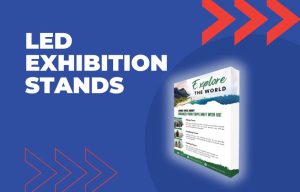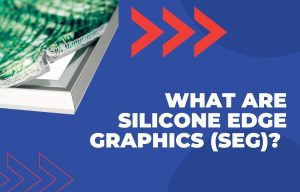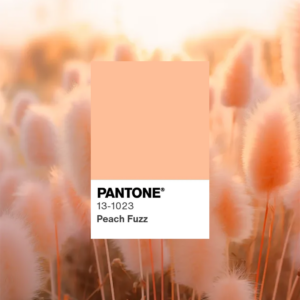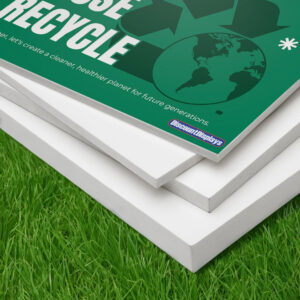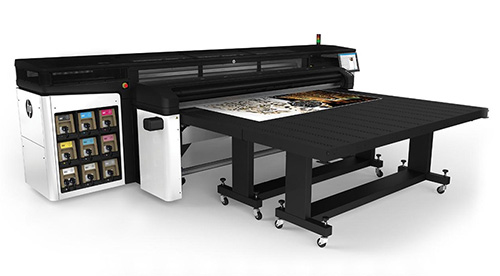
In this modern era, there are lots of different ways to print large-format graphics, with eco-solvent, UV-cured and latex inks being the most common.
It’s important that your finished print comes out with vibrant colours and crisp outlines so it looks perfect for your exhibition or promotional materials.
In this article, we are going to explore the three most common inks used in large-format printing and what the differences are between them.
Eco-Solvent Inks
Eco-solvent inks are perfect for exhibition graphics, vinyl and banners due to the vibrant colours they produce. These inks print the standard CMYK colours as well as green, white, violet, orange and more. The inks are also waterproof and scratch-resistant once printed and can be printed on a broad range of uncoated surfaces.
With eco-solvent inks, colours are suspended in a mild biodegradable solvent, which means that the ink has virtually no odour as they don’t contain as many volatile organic compounds (VOCs). The reduced VOCs are safer for the environment as they emit less air pollution. This makes them an ideal choice for small spaces, hospitals and office environments.
One drawback of eco-solvent inks is that they can take longer to dry than UV and Latex, which could cause bottlenecks in your print-finishing process.
Advantages: weatherproof, scratch-resistant, odour-free, environmentally-friendly (low VOC levels), wide-colour spectrum
Disadvantages: drying time
Ideal for: large print graphics, vinyl stickers, banners
UV-Cured Inks
UV inks are used quite often when printing vinyl as they cure quickly and produce a high-quality finish on vinyl material. They aren’t recommended for use on stretch materials as the print process can band colours together and affect the design.
These inks dry much quicker than solvents as the exposure to ultraviolet (UV) light quickly solidifies the ink. These inks use a photochemical process to dry the inks, rather than using heat like many print processes.
A fast ink drying time means printing using UV-cured inks can be done quickly and efficiently, which benefits high-volume print shops. However, the balance needs to be right as colours can become blurred if the process is too fast.
One of the main benefits of UV-curved inks is that they are often the cheapest printing option as fewer inks are needed in the process. They are also very durable as they are printed directly onto the material and can last several years without degradation.
Advantages: quick-dry, low-cost, weatherproof, scratch-resistant, clear details, environmentally friendly (low VOC levels)
Disadvantages: no use on stretch materials, risk of blurred colours
Ideal for: outdoor signs, vinyl stickers, and materials like wood, metal or glass
Latex Inks
Latex inks are probably the most popular choice for large-format printing in recent years. The technology for this printing process has been continuously developing at a rapid speed. The inks are commonly used for exhibition graphics, retail signage and vehicle graphics.
They are purely water-based, but come out fully dry and odourless, ready to be finished straight away. This enables a print studio to produce high volumes in a short space of time.
As they are water-based inks, they can be affected by heat, so it is important to have the correct temperature set up in the printer profile.
Latex inks are more environmentally friendly than UV and solvent as 60% of the ink is made up of water. There are also fewer VOCs than solvent inks, reducing air pollution.
Advantages: odour-free, vibrant colours, environmentally-friendly (low VOC levels), quick-dry, non-flammable, weatherproof, scratch-resistant,
Disadvantages: heat-sensitive,
Ideal for: large paper prints & graphics, signage, vinyl stickers, vehicle graphics
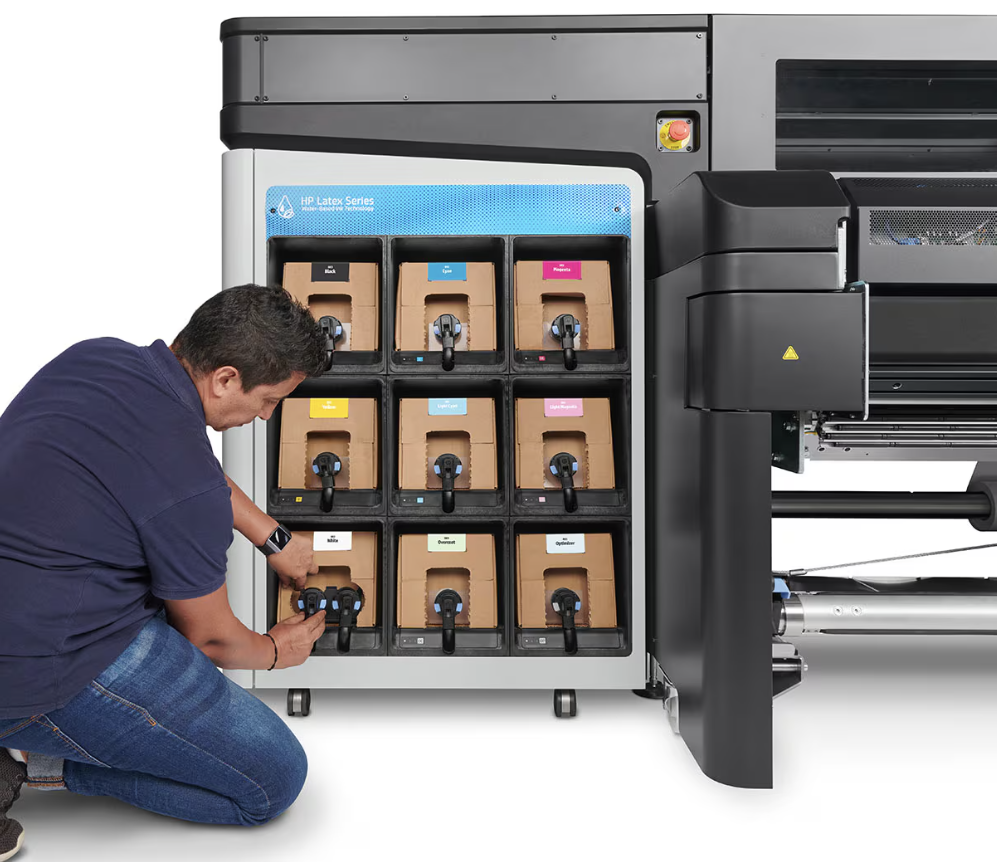
Source: HP
As you can see, solvent, latex and UV inks all have different benefits and drawbacks. Eco-solvent inks produce vibrant colours and are environmentally friendly due to low VOC emissions, but they have slower drying times. UV-cured inks dry quickly under ultraviolet light, making them cost-effective and durable, though they aren’t suited for stretchable materials. Latex inks are water-based, dry fast, and ideal for high-volume printing, but are sensitive to heat.
At Discount Displays, the majority of our graphics are printed using latex inks as they are a versatile option that produces a high-quality finish. Head over to our large-format printing page to find out more about our printing process.

